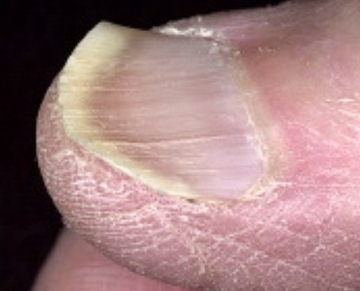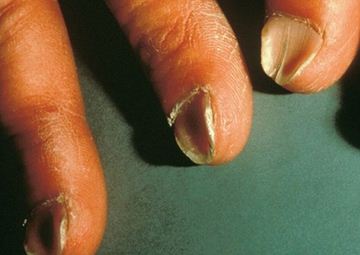Oculogyric Crisis (OGC) – Treatment, Symptoms, Causes
What is Oculogyris Crisis?
Oculogyric Crisis is the most known reversible involuntary reactions that involve the eyes. Oculogyric Crisis is an event where there is a sudden spasm or twisting of the eye muscles wherein it makes the eyeball stay in a fixed, unmoving position such as sideways or looking up, which stays that way for few minutes to hours. It is an excruciating sudden and acute or chronic effect of some medications given to psychiatric patients. This disorder also occurs most often to patients suffering from neurological disorders such as Parkinsonism, both adult Parkinsonism and Juvenile Parkinsonism. There are also other times or cases of Oculogyric Crisis where the eyes are looking down and sideways. Sometimes, there is also dystonia of the lids. Oculogyric Crisis may also be triggered by stress, emotional stress in particular, and too much intake of antipsychotics. The attack of Oculogyric Crisis may start suddenly or may develop from minutes to several hours. It is also a tardive hyperkinetic movement associated with worsening psychotic signs and symptoms.
Incidence of Oculogyric Crisis is much greater in men than women since they are more dpredisposed because of their lifestyle. This is common among children suffering a disease known as Juvenile Parkinsonism and also among adults taking neuroleptics as their mainstay therapy for psychchiatric disorders such as Schizophrenia, Pseudo Dementia and paranoia.
Causes of oculogyric crisis
There are many researches that have been made to point out the exact cause of Oculogyric Crisis. Here are some of the causes that have been listed:
- Too much alcohol intake especially to those predisposed patients
- History of previous Oculogyric Crisis attack
- Cocaine
- Stress (particularly emotional stress)
- Over fatigue
- Kernicterus
- Parkinson’s Disease
- Tourette’s Syndrome
- Multiple Sclerosis
- Neurosyphilis
- Juvenile Parkinson’s Disease
- Cystic Glioma of the 3rd Ventricle
- Trauma to the head
- Encephalitis (Herpes Encephalitis in particular)
- Infarction of the thalamus (Bilateral)
- Fourth Ventricle lesions
- Drugs such as Neuroleptics like Olanzapine, Benzodiazepines, Amantadine, Cisplatin, Nifedipine, Metoclopramide, Chloroquine, Carbamazepine, Diazoxide, Influenza Vaccine, Levodopa, Lithium therapy, Pemoline, Phyncyclidine, Reserpine, Domperidone and Tricyclic
Sypmtoms of oculogyric crisis
Signs and symptoms Oculogyric Crisis may be sudden or may develop gradually. On the onset of the disorder, you will notice the patient to be restless, discontent, in constant motion, anxious and always on the move. The person cannot sit just for one minute or two. During the start of the attack the patient may seem agitated, feeling weak and staring blankly. After the episode, there is the distinguishing sign of Oculogyric Crisis which is the severe and prolonged alteration of the eyes either up and on the side or down and on the side. Moreover, there is also the often reports of other findings such as the backward and sideways bending of the neck, mouths hugely open, protrusion of the tongue and eye pain. There are also reports that it may also be correlated to agonizing aching of the jaw due to spasm that can result to tooth breakage. After the episode the patient feels very tired. The most bizarre feature of Oculogyric Crisis is the sudden termination of psychiatric signs and symptoms.
Other than those mentioned, there are also other features of the disorder during the attack such as unable to speak or say a word, blinking of the eye, tearing, dilation of the pupil, blood pressure increase, palilalia or parroting (repeating own words) , increase pulse, face becomes flushed, light-headedness, headache, anxiety, agitation and restlessness, depression, violence, drooling of saliva, respiratory difficulty, paranoia, saying the same ideas for several minutes to several hours, obscene language and depersonalization.
Oculogyric Crisis may also become recurrent if the patient continues to take those drugs that had been mentioned above and if they suffer from stress.
Treatment and Management
Research shows that initially, Oculogyric Crisis is treated and managed by giving drugs. The drug of choice for OGC is antimuscarinic Benzatropine or Procyclidine which are both introduced intravenously. The effect of both drugs can be seen five (5) minutes after infusion through IV or may be longer for 30 minutes before full effect of the drug. Additional doses of Procyclidine may be given after 20 minutes. All of the medications that can cause or trigger Oculogyric Crisis should also be discontinued. 25 mg Diphenhydramine (Benadryl) can also be given as treatment.
For immediate relief of Oculogyric Crisis high potency antipsychotics and anticholinergics drugs can be given.
Comfort and reassurance should also be encouraged during the acute phase of the treatment. Cogentin may also be given via IV or IM. Diazepam or Lorazepam are also drugs of choice for Oculogyric Crisis since it helps relax the ocular muscles. For chronic Oculogyric Crisis, oral forms of Cogentin, Diazepam or Lorazepam, and Benadryl or Amantadine are given as maintenance therapy especially in cases where Oculogyric Crisis becomes recurrent.
Promethazine 25mg or 50mg can also be given via IV or IM although it is used less frequently than the other drugs.
It is very important to tell the patient’s relatives to monitor the onset of the disorder until it lasts and to take note of several differences from its first attack to its current attack. This will help the healthcare team to develop and formulate better treatment and management strategies. Also, compliance to treatment regimen is also important to avoid recurrent attack of Oculogyric Crisis. This will prevent further development of the disorder preventing it from becoming chronic since chronic Oculogyric Crisis can be fatal. Also, the drugs of choice for chronic Oculogyric crisis have more side effects that can also trigger and precipitate attacks more often. Health teaching is also important for the part of the relatives. They should learn how to keep the patient free from any injuries especially during the attack. A relative should always be beside the patient to monitor and to give initial treatment during the onset of the attack.
Anti-emetics should be avoided since it also triggers onset of Oculogyric Crisis.
Complications
The complications of Oculogyric Crisis vary from simple symptoms like painful jaw, drying of the eyes and difficulty swallowing to chronic complications such as airway problems like laryngospasms, upper airway obstruction spasm of pharyngeal muscles. These chronic complications of Oculoryric Crisis are rare but are the most fatal and most of the patients who suffer from these chronic complications die after suffering from them for several seconds for as long as few minutes. But these complications can be avoided if the patient avoids the triggering factors which predispose him or her to Oculogyric Crisis.


